Big Surf Island is one of the most fondly-remembered DLCs of the late 00s, but you rarely hear anyone telling the story of its winding and unlikely path to market, so let’s talk about it. After the launch of Burnout Paradise, Criterion Games cooked up a host of ideas for where the title was going to be taken next. Among other whiteboard fantasies, they considered having a network of tunnels running under Paradise to provide an extra layer of shortcuts and thought about having cars and bikes interacting in the same space, referencing Road Rash for the 3DO. The opening of Road Rash does have a strong Burnout vibe to it. They even toyed with the idea of introducing planes and helicopters to the game, going so far as to demo the winged aircraft to the press and saying they may add them in a future update. One YouTuber appears to have posted footage of a biplane flying over the city, while another has uploaded what they claim is a recording of a working helicopter, pulled out of the Russian beta test of Paradise’s Vanity Pack 2.0. When these aviation concepts were rejected Criterion said it was because Paradise City was not built to be seen from the clouds and if the Burnout Wiki is to be believed another factor was lingering invisible barriers in the game world. This, however, is the mild stuff.
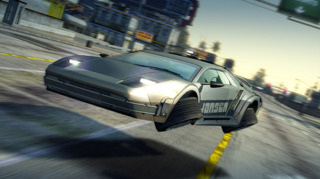
Criterion once conceived of a portal which would allow racers to travel back in time, but thought this was “going a bit too far”, a concept it’s hard to imagine them ever considering. That being said, they did basically put Doc Brown’s DeLorean in the game, so they still managed to honour time travel media in some way. Another hot idea was adding the Moon to Paradise, the means of transit to it being a rocket that would launch from Big Surf Island, and in case you’re thinking that was a passing pipe dream for Criterion, they claim to have had a fully modelled Moon that could be driven on in-studio. Of course, few of these ideas made it beyond a meeting room table or a software prototype, but there was an exception. From very soon after Paradise’s release, “the island” was a focus of brainstorming and development efforts among the devs. Even in the game’s original incarnation you could see the silhouette of the island off of the East Coast of Downtown Paradise, and despite the base game being released in January 2008 and Big Surf Island not coming out until June 2009, by May 2008 Criterion had such a tangible vision of this new location that they had named almost all of the buildings on it.
You may have noticed that the suspension bridge that feeds into the island is named “Paradise Keys Bridge”, a play on the real-world Florida Keys. The Florida Keys are an archipelago of around 1,700 islands and so you might well ask “Shouldn’t the Paradise Keys consist of more than just this one?”. The answer is yes. Criterion had planned to create multiple islands for the game, each focusing on a different dynamic, from circuit racing to off-road motorsports. There still are bits of untextured island geometry that can be foundfloatingoutintheocean, suggesting they would have belonged to the Paradise Keys if development had gone differently. Should this archipelago have become a reality, Criterion’s idea was that players would be able to race boats and cars between these locations, and this is presumably why Big Surf Island has a wooden pier you can drive to the end of that confusingly has nothing on it. Criterion has since described their land vs. sea concept as “too sane”, but note “we all know that boats can jump because we saw it in the film “Live And Let Die””. The one tangible piece of content which emerged from the ruminating on all these other islands was the “Dust Storm” dune buggy. Originally intended to feature in the off-road region, the dune buggy was eventually made the banner vehicle of Big Surf Island.
Again, if you consider the Burnout Wiki a reliable source, Big Surf Island was at one point intended to be a stunt jump-based area and was called “Big Air Island”, and to be fair Criterion’s stories of its development lend some credence to this legend. Within the studio, Stunt Run had become a highly popular Event and so the devs assumed the same would be true within their fanbase. With that in mind, they had intended to build the island in a similar manner to the Naval Yard, Paradise City’s southerly garden of ramps. That direction changed somewhat as Criterion got to grips with how fans were really playing the game.
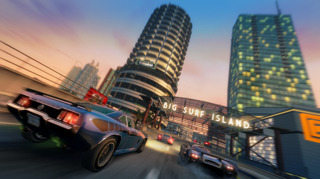
While we tend to think of DLC as something that is crafted by a developer for us, the forging of Big Surf Island was more of a two-way street. Criterion was closely monitoring player metrics in their game, scooping up data on driver activities to use as a barometer for what was popular. It created an unusual circumstance where the way we played the game directly shaped its content. Through their telemetry, the company discovered that more than Stunt Runs, it was Freeburn Challenges that were exciting players. They also started to build a picture of the most popular spots in Paradise City, like the airfield, the quarry, and the beach. The update they were building, originally codenamed “Eastwood”, was set to be a free addition to the game, but as time went on the studio became more and more ambitious with their new playground. Release was pushed further back and the inflated time and resources spent on the project meant it had to become paid DLC, thus the Big Surf Island we know was born.
You can see the fingerprints of those player metrics in the composition of the final island: It’s an area designed for up to eight players to freeroam about in with flashes of the best bits of the main game embedded into it. Among other examples, its beach reinterprets the Palm Bay Heights beach and its construction yard takes clear inspiration from the foundation game’s airfield. In comparison to the core Paradise City, a far greater portion of Big Surf Island is blanketed with urban areas as opposed to rural ones, and even the farthest-flung dirt path on its map is only a stone’s throw away from its aquarium and tacky hotels. This means no getting stuck in spaghetti strand roads, miles from the main clusters of content. Where you do find those clusters of content they’re also grouped more cosily together. We’re all familiar with expansions for big budget games that feel rushed because designers, artists, and programmers simply couldn’t create large enough levels to stage the action in, but in the case of Big Surf Island going compact works. The relatively small area of the DLC allows a ratio of content to space that makes you feel like a kid in a sweets shop. That moment when you first reach this new location and can pick up a whole chain of fresh billboards and smashes in a row is unbeatable.
One vital method Big Surf Island uses to jam so much content into so little space is verticality. When Criterion can no longer build outwards, they build upwards, letting you climb buildings, grab air, and shatter billboards as you skip across the city’s rooftops. In the opposite direction on this axis, you can find a few tunnels built beneath the roads, a ghost of that shortcut network that the devs had previously disregarded. One of the biggest challenges Criterion faces in the area of verticality is pulling off the Stunt Jumps; they require more space than the other collectables as there has to be a lot of open air for a car to fly through and a clear landing zone for it on the other side. This means the designers are limited in the number of Stunt Jumps they can implement here, but they have a solution to that too. Instead of trying to force in an excessive number of Stunt Jumps, they stay restrained with their quantity but make sure the ones they do place into the world have more of a kick than any you’ve experienced before. These “Mega Jumps”, which provide an extra height boost, are some of the best jumps in the game.
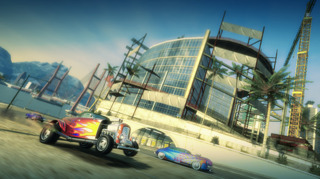
The most content-dense areas of this DLC are also where you will see some of the most skilled environmental work. This doesn’t feel like a town cobbled together from repeating skyscraper models, instead, there’s a variation in shape and style to the buildings that speaks to the passion with which this DLC was made. It’s a shame that with a camera that’s fixed very low to the ground for gameplay reasons, Paradise often can’t boast about its grandest landmarks. One building with a particularly interesting story is the large cuboid structure that greets you from your right as you arrive on the island: Taylor Jay Towers. Criterion had at one point held a contest to see who could battle their way to the #1 Showtime score in Downtown Paradise, the winner of which was a user under the screen name dbc9mx. The prize of this contest was to name that building, one of the last major buildings in Big Surf Island without some kind of moniker attached, and so dbc named it after his son, Taylor Jay.
While the above naming method is clearly an exception, it is spooky how hard the developers conform to a pattern with the rest of the names here. Building names in the area are often references to decades-old UK bands and television, e.g. Tel Wogan’s or the Happy Sundaes Ice Cream Bar. These pop culture Easter eggs continue in tiny strings of text printed on walls around the isle: Colourful block capitals with phrases like “SAY WHAT YOU SEE” or “SUPER MATCH GAME”. It’s moderately creepy to find that this quantity of very specific references, which have nothing to do with the game, were right under your nose the whole time. None the less, if you own Big Surf Island and have a passable knowledge of vintage British TV, I encourage you to go on a scavenger hunt for these little tributes. It’s fun in a bird-spotting way. If checking out the oddly-named shops and eateries isn’t enough, the Freeburn Challenges are another good way to get in touch with the island. There are fewer barriers to participation with these challenges than those in the original game, as the expansion lets you complete them with any number of players. Unlike in vanilla Paradise, you never have to kick anyone or rally large groups of drivers to get past the velvet rope. Of course, the positives I’m describing here are all internal to Big Surf Island, but the DLC does also give something back to the larger game through its unlockable vehicles.
Many of the new vehicles in this expansion combine the concepts of two existing microtransaction packs: The Legendary Car Pack and the Toys Car Pack. These fleets of automobiles are meant to appeal for different reasons than most of the game’s original garage. The base Paradise may encourage you to select a car because it is a bit silly, but most of them are meant to entice you by having a cool look, a boost type you are into, a certain handling, or the stats you’re after. The Legendary and Toy Cars are trying to draw you using a whole other method: Novelty, and that’s what carries over to many of the Big Surf Island cars. Sure, you might want to drive the Toy Spirit or the Toy Nighthawk because of how it feels when you’re behind the wheel of them, but they’re selling themselves strongly on the promise of letting you drive a pseudo version of Ghostbusters’ Ecto-1 or a play on Knight Rider’s KITT. This is another way that Paradise squeezes the most out of its decision not to use licensed vehicles. In a game full of real car models these cartoonish cameos would stand out, and I doubt Ford would be too thrilled about someone putting a rip-off DeLorean in their game alongside actual Fords, but Paradise has free reign to just throw in whatever kind of car, truck, or van it wants. As long as it’s on four wheels and they can imagine it, it can go in. They don’t need to worry about the petty constraints of licensing or realism.
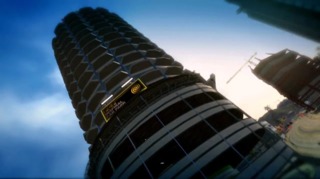
There are also vehicles like the Hunter Olympus Governor where part of the fun is that they’re borderline sabotaging the game’s balancing. The Governor is tough as steel and handles like a brick, just try getting it to E-brake turn. However, where that might normally be offset by a dampened speed and an aggression class boost, the Governor doesn’t compromise on speed and uses a stunt class boost that’s easy to fill. Even bolder is the Jansen Toy 88 Special. Not only is it the DLC’s most elaborate replica of a cinematic vehicle, it makes an outright mockery of the game’s physics. It moves neck-snappingly fast, slips out of the way of traffic like a bar of soap, and the air you can achieve while using its hover mode can be game-breaking. It is not a perfect machine, it has an annoying tendency to spin out into walls, but you can aim it at a billboard and end up jumping over that billboard, or fly off of a ramp with it and hit invisible barriers in the game’s geometry. However, even when you’re not using a ridiculous car like that, it’s surprising how common it is to uncover hard limitations in Big Surf Island and these limitations usually hinder the experience.
For example, Big Surf Island seems to be blissfully unaware that in Burnout Paradise, hills are not your friends. They obscure the upcoming road in such a way that it’s very easy to crest the top of one and immediately be greeted with a civilian car fused into your front bumper. The people who decided the lay of the land for this map were a cabal of unforgiving hill gods and these steep inclines only become more of a pain when they combine with other chaotic parts of the environment. For instance, there are streets here which have both hilly terrain and conservatively spaced intersections, leaving you blindly driving upwards into a crossfire of traffic. Another disadvantage of all that vertical layering is that you can lose countless minutes of playtime to trudging up the same ramps over and over, climbing towards the elevated areas you’d naturally want to hang out on. For example, the roof of the parking garage branches off in three different directions and each one of those branches has additional branches, so you really can’t take every jump off of that building without driving up about three stories several times. It’s an expanded version of the problem the parking garages always had.
No one can deny that almost all areas of this DLC are happy to receive you with open arms, but that “almost” still counts for something. Despite Criterion apparently wanting to build a place where “If you can see it, you can drive it”, this vacation isle does have a few roped off sections and out-of-bounds zones that you can unintentionally fall into due to the changing elevation. Other kinks and dents in the city layout include alleyways and jumps which let out straight into concrete walls and one area where the turn in a road is so sharp that your default dune buggy loses almost all control trying to drift around it. In most circumstances, I’m not a big fan of the Carson Dust Storm, a particularly wide vehicle. If you remember how the motorcycles in the Bikes update seemed too slim to ever cause wrecks, it turns out the opposite is true for these vehicles.
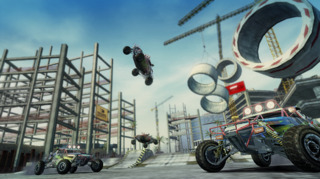
When you compete in a Road Rage or Race, the game tries to match your automobile against others of roughly the same type, and so if you ride the dune buggy you can expect to be accompanied by other broad-axled rustbuckets identical to you. When they spread out across the road you can’t get a fair look at the obstacles ahead and the width of these automobiles makes it easy for them to collide with cars. These collisions then create spontaneous pile-ups which are a surprisingly common cause of player wrecks. In fact, I wouldn’t be surprised if the AI in these vehicles was programmed to kamikaze.
In general, the Events in this expansion don’t have enough variation between them and there’s more pressure to play Events when the DLC is so light on Freeburn Challenges. The unmodified Burnout Paradise can create a lot of different courses for each of its Events, both because the individual districts of its city are large and because every one of them immediately opens onto another two or more other regions through an extensive and obsessively interwoven web of asphalt. It gives the game enough continuous road to work with to make races and other competitions miles long and enough connections between those roads to ensure they use a multitude of paths. Big Surf Island does not replicate this kind of smart city planning. The island constitutes a smaller district in itself and only has one solitary street connecting it to the rest of the world. It has neither the internal capacity to support varied routes of any considerable length, nor the connections for its routes to flow out into other boroughs of Paradise City. This is why the DLC makes use of checkpointed Events, because there’s not enough space here to create a sizeable path that runs in a single direction. It also leaves many Events taking you on the same tired trip around the outer rim of the island; it’s the only place the expansion can find a lengthy chain of roads that turn smoothly into each other. It’s a big deal for the Burning Routes and Races in particular because they have to take a set path. While freeroaming or indulging in other Events, you can make your own routes that adapt to the shape of the region, but these two particular activities require you to stick to a very specific kind of track that the DLC cannot construct from the parts at its disposal.
I should acknowledge that while I’ve only been discussing the Events here, this isolation affects all play in the region. If you’re just trying to boost your way across the area and see where the tarmac takes you, it’s easy to feel like a spider trapped in a bathtub. You can try to imagine a Big Surf Island that avoids this problem, allowing its vehicular play to flow back into the vanilla map, but there’s no version of this idea which doesn’t run into conceptual problems very quickly. This DLC’s eponymous location is not closely connected to the rest of the world, it’s a patch of land way out in the ocean with one way in and one way out.
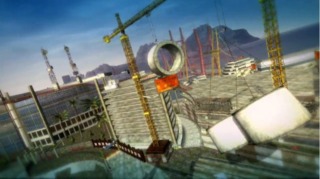
Paradise Keys Bridge is the physical link that allows Criterion to keep Big Surf Island connected to, but distanced from, the mainland. If we think through it, it’s not hard to see that even if Criterion routed the Events to leave the island, they would have you running down yet another identical stretch of land over and over. The neat solution to this would seem to be to get rid of the bridge. You could just affix the region to one side of the main landmass and make it a peninsula. There is arguably a prime spot to do this in the south-east of the map between Harbor Town and Downtown Paradise, although you’d have to bulldoze a portion of the harbour to do it. Maybe you could embed the content more deeply into the environment and instead of the location being a peninsula, its contents could fill the lake on the west side of the world or the mountain in the centre, although that would risk robbing the city of some of its most characterising geographical features. Perhaps multiple small bridges over existing content into the island would work.
Let’s say we found our agreeable place to glue on the DLC playground, our routeing problems wouldn’t end there. Drives would remain unlikely to flow smoothly onto Big Surf Island as there would still only be one overused road in and out of the region. You could try to stitch multiple roads from the location back into the original road network, but this would come with what might charitably be called “challenges”. Remember that the roads from the vanilla Paradise are configured to merge into each other in such a way that you rarely have to slow down. Shortcuts and curves make it so that you can transition from street to street without making hard, right-angled turns. Just creating a bunch of new turn-offs leading from the original Paradise to the DLC content would not give you those gentle regions of transition that the game’s silky smooth navigation relies on, you’d just get a bunch of 90-degree angles. Then you would have to deal with the issue that any Big Surf Island road being connected perpendicularly to any original road would create a new intersection, and as a general rule intersections are meant to have an Event starting line on them. It’s the designers’ way of ensuring that whatever direction you’re headed in, you’re going to find something to do. You would have to leave these intersections noticeably bare, come up with a new Event for every one of them, or spread the Events intended for the DLC over them, making the expansion content much thinner.
A better alternative would be having streets from the mainland lead directly onto streets from the new content without an angle, but this would be nigh on impossible to do for Big Surf Island’s more rural areas. Even if this turned out to be a viable layout for a portion of the map, both this solution and the above one would route more civilian traffic into a smaller area, which as Big Surf Island teaches us can create excessive obstacles. It would also seem mildly cruel to place this DLC content so tantalisingly close to the base content, but then wall it off for anyone who hasn’t paid the requisite toll. These ideas could likely only be thought experiments anyway. Melding the expansion and original content that finely would probably have required more development time and resources than Criterion had at their disposal, and if DLC Events were going to push you out into the rest of the city, that would reduce the amount of playtime you’d spend in the new location you paid for. It’s not like there would be finishing lines for existing Events on the Big Surf landmass either, which would still leave a lingering sense of division.
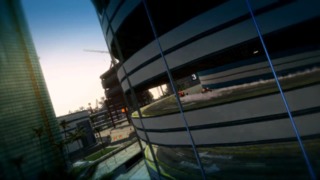
Burnout Bikes tried to implement a new box of mechanics for Paradise but threw a wrench in Paradise’s gears because the game was not designed to accommodate those mechanics. Given this, it makes a sad amount of sense that Big Surf Island, a DLC that tries to introduce a new location for the game, sparks and sputters in places because the game wasn't built to accommodate that location. A lot like the landscape of the island itself, the quality of Big Surf Island is undulating. In comparison to Bikes, it’s slightly easier to understand why it reaches its highs and why it reaches its lows, but it has a more complicated combination of them.
To create a good location for Burnout Paradise you need a lot of space, a high density of content, and a sense of openness, and this DLC reaches different levels of success with each of those attributes. Big Surf Island is enclosed but tightly packed with bursts of fun. In itself, it fits together like a perfect jigsaw but it’s kept at arm’s-length from the rest of the game. The setting’s remoteness from the mainland does give you that feeling of jetting off for a holiday in a far-off place, but holidays are also meant to be an escape from the headaches of the everyday, and Big Surf Island actually ratchets up the level of stress caused by some of the game’s roughest edges. It’s a DLC to a game mainlining the concept of freedom that surrounds you on all sides with water.
However, I like Big Surf Island. It works as a last big number for Burnout Paradise, a chance for Criterion to deliver the fans what the data showed they most wanted. The jumps are bigger, the cars are faster, and the spaces between rewards are lesser. We’re lucky the studio got this expansion in before the curtain closed on Burnout Paradise and maybe Burnout as a whole. Over the course of about eighteen months, EA allowed Criterion to create post-release content for Paradise but then shuffled them off to work on the Need For Speed series for a few years. If VG Chartz is to be believed the Need for Speed games have sold muchbetter than Burnout Paradise did. Criterion did not, however, forget their plans for planes, off-road racing, and multi-vehicle interaction, as they began working on a new game which included most of those ideas and presented their concept to the audience of EA’s 2014 E3 briefing. The catch is that the status of that game is a little ambiguous.
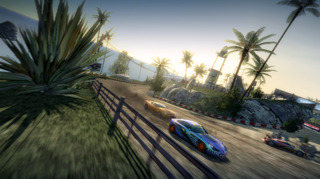
On June 21st Gamespot reported that the project had been cancelled so that Criterion could toil away on the Star Wars VR game and yet I’m inclined to believe it’s being kept alive in some form. The same Gamespot article also states that Criterion are still working on at least one new IP for EA, and on June 15th, six days earlier, IGN reported that the “Beyond Cars” project was still extant, just in a somewhat different state than it was originally being developed in. Let’s hope that the fruits of their work come to bear sometime soon because design like this is too good for the industry to lose. Thanks for reading.
Additional Sources
Burnopedia: Game Changing Content (this article notes whenever this wiki is used as a source)
The Big Surf Island Update: CRASH TV 15 BURNOUT PARADISE
Burnout Paradise - Big Surf Island Tour Part 1 - CRASH TV 33
EA.com Burnout Web Portal [Archived, 1 Mar 2010] (this source has been defunct by a robots.txt since work on this article started but has been unofficially replicated here and is corroborated as an official Criterion blog by this Kotaku article)
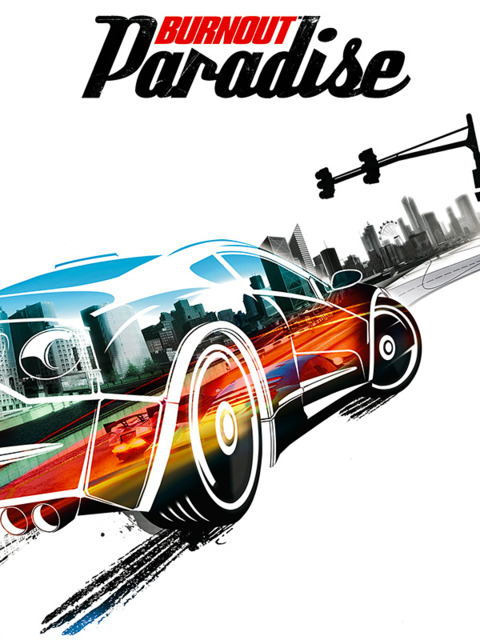
Log in to comment